I’ll admit that I’m biased when it comes to the topic of hammock camping vs tent camping. If you’ve read any of my other content, you know that I love hammocks and have no regrets about making the switch. Hammocks are great, but not for everyone in every situation. I still find the need to sleep in a tent from time to time, but if I can be in my hammock, it’s always my first choice.
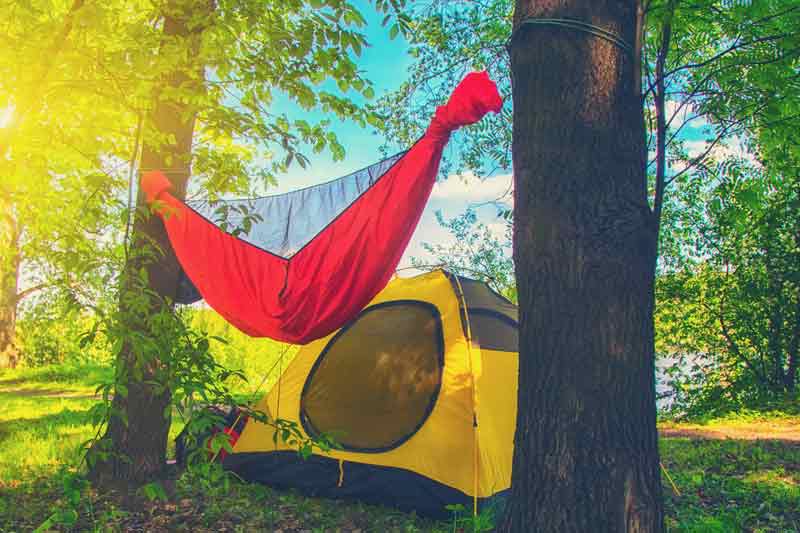
This article is going to be a battle of sorts and I am going to give you an unbiased view on each of the factors explored below and name a winner in each category. I’ll also give you my opinion (for what it’s worth) and I’m sure people will disagree with me on some points and you will have to take my word at face value. Ultimately, you will need to decide for yourself which is best for you – hammock or tent.
1. Comfort
This category really comes down to you and your comfort preferences and camping situation. I personally love the comfort that my hammock provides so I nearly always choose it. However, there have been some situations when my tent fit the situation best.
Hammock: I think there are divided opinions when it comes to comfort while sleeping in a hammock. There are people like me who feel there is no comparison to the comfort of sleeping in hammocks. Then there are others who feel like they can’t get a good night’s rest no matter what they do. There is definitely an art to finding your ideal comfort and it does take some experimenting to get it right. Once you learn how to get the right amount of sag in your hammock to allow you to sleep on the diagonal, you will be set. It’s getting to that point that can be frustrating. You will have a learning curve to figuring out how to be comfortable in your specific hammock and setup. There are also other variables to consider like extra gear for insulation and weather conditions.

ALSO READ: Is sleeping in a camping hammock comfortable?
Tent: The ground has its own set of obstacles that could keep you from being comfortable. Large roots, rocks, uneven ground, pooling water, are just a few of the more common things tent campers run into that hammock campers don’t typically need to worry about. Sleeping pads and inflatable mattresses are popular options to combat ground conditions that aren’t ideal. The use of such gear will also depend on your situation and how you plan to camp.
The Verdict: Hammock and Tent
2. Consistency
Hammock: Once you’ve figured out how you like your setup and find your sleep position in the hammock, the hard work is done. The next time you set up will be the same and you don’t have to worry about changing things up or making adjustments. It does take time and experimentation to get to the point where your setup is consistent. No matter where you are (as long as you have trees) you can get your perfect hang.
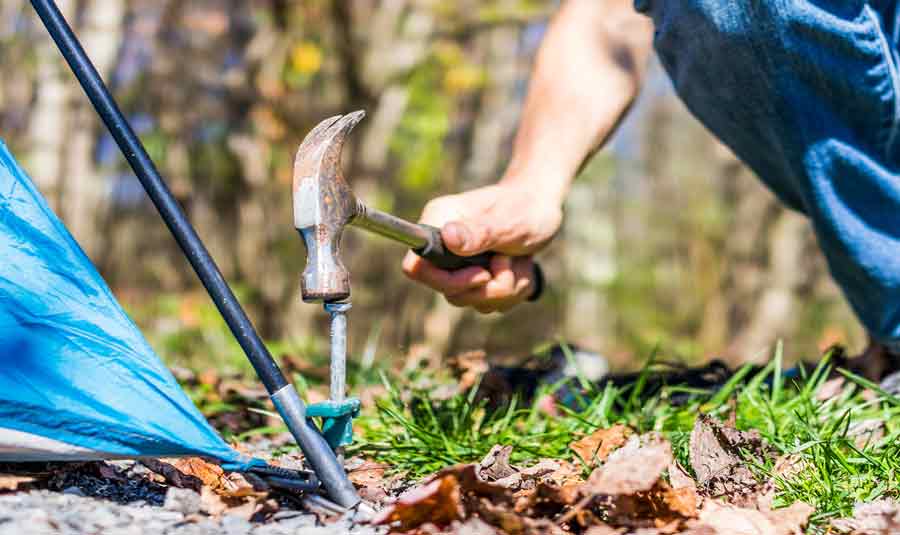
Tent: The ground is far from being consistent and you never know what your going to get. You may think the ground is even only to find that you are sleeping on an incline. You can even out the ground a little, but that can only go so far when there are immovable tree roots or large rocks. Pooling water could be a big concern as well if you get a heavy rain. Waking up in water will ruin your day for sure. Even though you may think you’ve found the right spot, you may not discover these things until you try to fall asleep or in the middle of the night. Just some things to be aware of.
The Verdict: Hammock
3. Usability
Hammock: Once you get the hang (pun intended) of hanging your hammock and getting your setup just right, hammocks are just as easy to use as tents. It’s the learning curve that you have to get past. It’s not difficult to do, but it does take practice. Anyone can learn how to set up a hammock – and there are manufacturers that make this easier for beginners – it will just take some experimenting to get it right.
Tent: I would say the same goes for tent camping. Tents are fairly easy to learn to set up. Again, there’s a bit of a learning curve, but once you learn how to properly set up, it’s no big deal. They even make ones that you just pull open and your set to go. When it comes to ease of use tents have about the same learning curve as hammocks do. Everyone has their preferences and one is better than another in this category.
The Verdict: Hammock and Tent
4. Versatility
Hammock: The ability to mix and match gear and customize your hammocking experience makes it a really attractive option. You aren’t tied to a specific manufacturer when you want to upgrade your gear. You have tons more options that allow you to customize your hammock system. If you want to upgrade your straps, bug net, or whatever, you can do so with ease. You also don’t have to change everything at once. You can upgrade your gear and set up piece by piece. This is my favorite part of hammock camping – I can get creative.
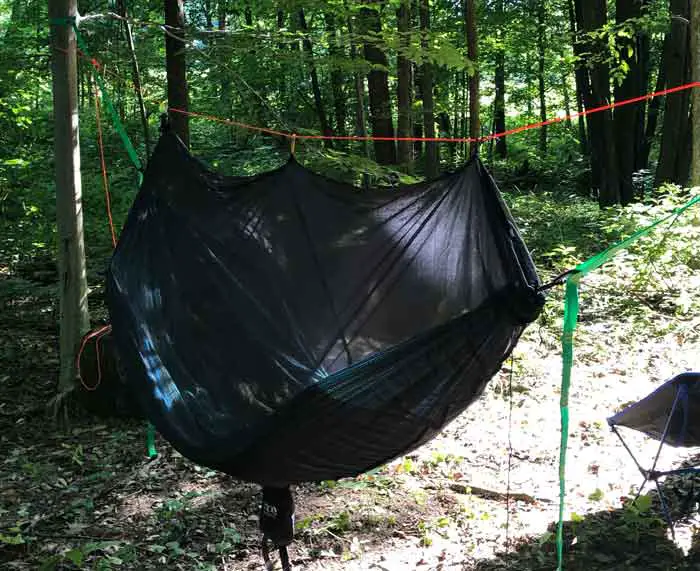
Tent: The customization of gear and equipment with a tent is lacking. You don’t have many options to upgrade and if you do, it’s going to probably have to be from the tent manufacturer. For the most part, if you want to change something about your tent, you will likely need to get a new tent with the feature you are looking for. It isn’t necessarily a bad thing to have multiple types of tents on hand to fit your needs for different situations. I know plenty of people who do this.
The Verdict: Hammock
5. Weight
Hammock: A common misconception about camping hammocks is that they are a lot lighter weight than tents. This is not always true. It depends on the type of hammock or tent you buy and if you need to have a lightweight set up. Most backpackers are concerned with weight and will opt for the lightweight hammocks. My system is about 4.5 pounds – 3.5 pounds if I don’t take my rain fly. The lightweight setups do come with heftier price tags so that is something to keep in mind.
Tent: Tents can be just as lightweight as hammocks. However, they are also more expensive. If you aren’t a backpacker and aren’t concerned with weight, a tent is a good option. Especially if you are car camping or staying stationary at a campsite and don’t need to walk with your gear over a far distance.
The Verdict: Hammock and Tent
6. Cost to try out
Hammock: If you are thinking about giving hammock camping a try, you can do it pretty inexpensively. You can get a starter hammock setup from Amazon or Walmart for around $20-$30 just to test it out and see how you like it. You don’t have to go out and buy the best quality hammock right off the bat. Some people spend time in a hammock and quickly decide that it isn’t a good fit for them. If you buy a less expensive setup and this happens, you aren’t potentially losing hundreds of dollars. If you do like it, then you can start investing in the really good gear. Also, even the inexpensive hammocks will last you a few seasons.
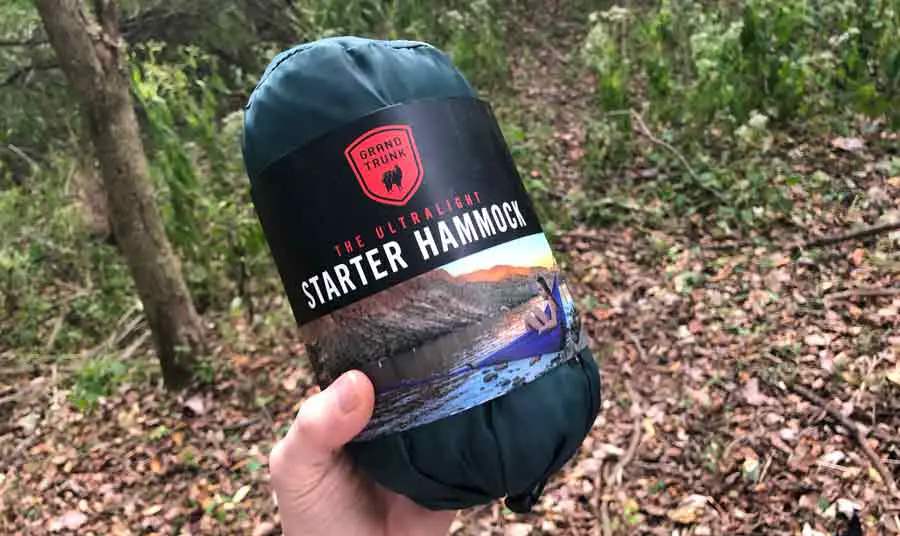
Tent: If we are being real, most people probably already have a tent on hand or could borrow one from a friend fairly easily. So you could technically get started zero cost. You will want to buy a tent that you can use more than once or twice. You will probably end up spending at least $40 to $50 on a mediocre quality tent. There are tents on the market for $20, but I promise it will only last one or two uses. Trust me, I have had the cheap tents in the past and they don’t really protect you from the weather or if something like the zipper breaks.
The Verdict: Hammock
7. Price for Good Gear
Hammock: The saying, “You get what you pay for,” is true when it comes to buying quality hammock gear and equipment. It’s actually true when we are talking about good quality tents as well. Getting started with hammock camping can be a little less expensive at the start. It’s when you really get into hammock camping you will find that the good gear is definitely an investment. Each piece of gear is also bought a la carte and you will likely have multiples as you build your gear stash.
Tent: Backpackers will probably want an ultra-light tent and those come at a higher price point – at least for a good quality one that will last. If weight isn’t a concern for you, then you can still spend about the same amount on a good quality tent that will last you years to come. In the end you will still be paying about the same either way you go.
The Verdict: Hammock and Tent
8. Small Footprint
Hammock: Being conservation minded is a huge thing for most hammock campers and the reason that many get into it. If done right, you should be leaving your campsite with little to no trace that you were even there. You will not be disturbing nature or the ground since you are hanging from trees. However, you must be sure that you are also using the proper equipment and not damaging the trees you are hanging from either.

Tent: When tent camping, you have no choice but to disturb the ground at your campsite. You may even have to make a small clearing in order to set up. When you leave you will see the footprint where your tent sat on the ground. In most cases, the impact isn’t huge and doesn’t do much damage. It’s just important to know that tent camping does leave evidence that you camped there.
The Verdict: Hammock
9. DIY (camping on the cheap)
Hammock: As mentioned above, hammock set ups are highly customizable and this certainly includes Do It Yourself options. The internet is full of creative plans and tutorials on how to DIY your own hammock setup and insulation systems. If you are handy with a sewing machine, this could be the way to go for you. DIY hammocks are usually really cost-effective and last for many years as well.

Tent: Depending on how skilled and creative you are, you can, of course, DIY your own tent setup. I personally haven’t seen as many tutorials on DIY tents as I have hammocks, but it doesn’t mean they aren’t out there. The difficulty level would be greater than a DIY hammock.
The Verdict: Hammock
10. Camping in Rain: Hammocks
Hammock: There are so many benefits to being in a hammock if you are camping in the rain. If you set up your rain fly and hammock properly, you will stay dry in the worst of rainstorms. There are some preventative measures that you have to take like ensuring that water won’t pool on your rainfly and adding drip lines.
Also Read: 21 tips to Stay Dry While Hammock Camping in the Rain
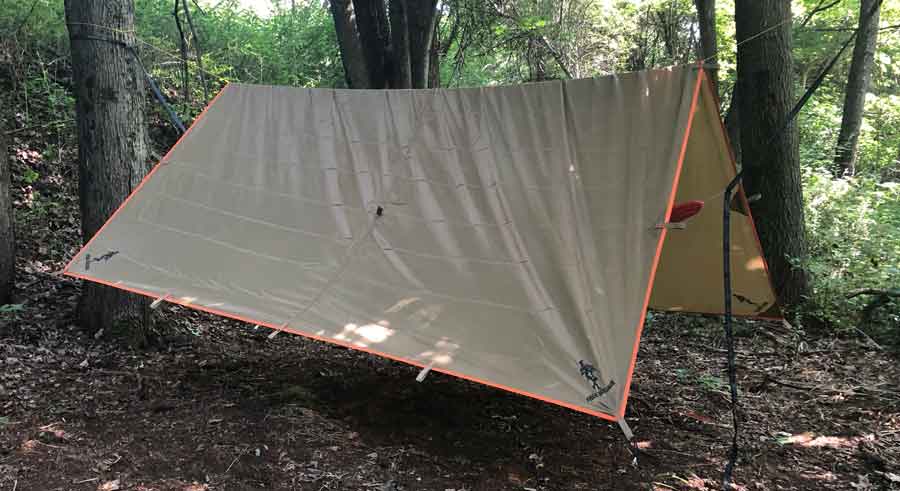
Tent: Since tents rest on the ground, they have a higher chance of pooling groundwater and it getting inside the tent itself. There are also complaints of improper rain fly coverage and leaking at the seams during heavy rain. On almost every camping trip I’ve been on with tent campers when it has rained, someone has woken up with standing water inside their tent. The key here is to get a quality tent.
The Verdict: Hammock
11. Camping in Winter:
Camping in the winter has its challenges no matter if you are in a hammock or tent. As long as you prepare and have the right equipment, you can enjoy a warm night no matter which you choose.
Hammock: Winter camping in a hammock does require good insulation systems that will protect you from the elements. Underquilts and topquilts, tarps, sleeping pads, sleeping bags and the like aren’t cheap and do add up. There are also 4 seasons tarps that will offer you the same protection as a tent provides.
Tent: One of the claims in favor of tents is that they offer more protection against the elements. The enclosed space does indeed offer great protection. You will need a good quality tent that will stand up to the weather. The ground also helps with insulation as there is no convection or airflow going under the body. Tent campers can insulate themselves from the cold ground by using sleeping pads.
The Verdict: Hammock and Tent
12. Camping in Summer:
Hammock: Convection can be problematic at times, but on really hot summer nights, there’s nothing better. I know, I know, that’s my opinion, but the cool airflow beneath your hammock will keep you nice and cool while you sleep. The thing to pay attention to is when the outside temperature gets 70 degrees or below. You will need some kind of insulation in that case. Otherwise, a hammock will provide comfort even on the most humid, warm nights.
Tent: Depending on the tent and the amount of airflow it allows, you can stay cool and comfortable in a tent. This is especially true if your tent has proper ventilation and keeps the tent from becoming stuffy and muggy inside while zipped up.
The Verdict: Hammock and Tent
13. Communal Sleeping – Sleeping Together
Hammock: Unless you prefer being up close and personal with another person all night, a hammock probably isn’t going to be the best option. Double hammocks can technically fit two people, but getting a restful sleep is a whole other story. Being squeezed up against someone else all night will make you sweaty and uncomfortable. There is also very little room to move so you will be stuck in the same position most of the night. Now, I’m talking mostly about two adults. It may be a little different if it’s an adult and a small child co-sleeping in a double hammock – little one’s don’t take up tons of room or generate tons of body heat. I will admit that it is really nice to lounge about for the afternoon or a hiking break with my wife. I love her…a lot…but I couldn’t sleep next to her in a hammock for the entire night.

Tent: When it comes to communal sleeping tents are, hands-down, the best choice. There is plenty of room to spread out in a tent with another person, or even multiple people, where everyone has ample sleeping space to be comfortable all night.
The Verdict: Tent
14. Set-Up Time
Hammock: Hammocks are by far the quickest to set up and tear down when compared to tents. Granted there are always exceptions to this as there are tents that are fairly quick to set up. It does take a little practice to become fast and efficient at setting up your hammock. The first time you set up won’t likely be very fast since you are just learning. The thing I will say from experience is that when I have set up at the same time as my tent camper friends, I have always finished first. After my campsite is entirely set up, I usually go help my friends finish setting up and staking their tents.
Tent: Tents I can have my hammock set in just a few mins. That is one of the great things about hammocks is how fast you can set up and tear down.
The Verdict: Hammock
15. Bugs
Hammock: You must have a bug net when hammock camping. There are a couple of options such as an integrated bug net that is attached to your hammock, or a separate bug net that you wrap around your hammock. It doesn’t matter which you choose as long as you have one when the bugs are active in the area or location you plan to camp in. Be certain that the bug net you choose for your hammock is a fine mesh material that will protect you from the smaller insects like mosquitoes and noseeums.
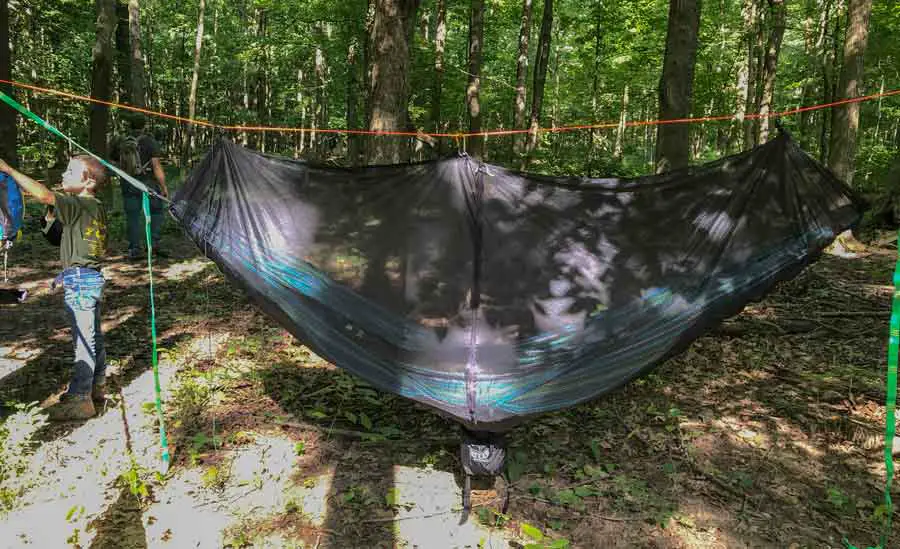
Tent: Most tents already have a built in bug net. Like hammocks, you will also want to make sure that the tent screen will protect you from smaller bugs like mosquitoes and noseeums. You want to be sure that the screen is a fine mesh that is marketed to keep those smaller insects out and away from you as you sleep. You also have a larger opening for bugs to enter when you are tent camping. It’s important to be cautious about how long you are leaving the tent door open when you are entering and exiting.
The Verdict: Hammock and Tent
16. Camping With Kids
Hammock: I’ll start by saying that not all kids can sleep in a hammock or will be comfortable doing so. It will depend on your child and circumstances. Hammock camping with kids that enjoy it, is amazing and such a fun thing to do as a family. You just need to be sure that your child can handle it and it is an enjoyable and positive experience for them at all times. Both of my boys regularly hammock camp. They are 8 and 10 years old at the writing of this article and my youngest started hammock camping when he was just 5 years old. Keep in mind that this is just the experience that our family had, and yours could be very different.
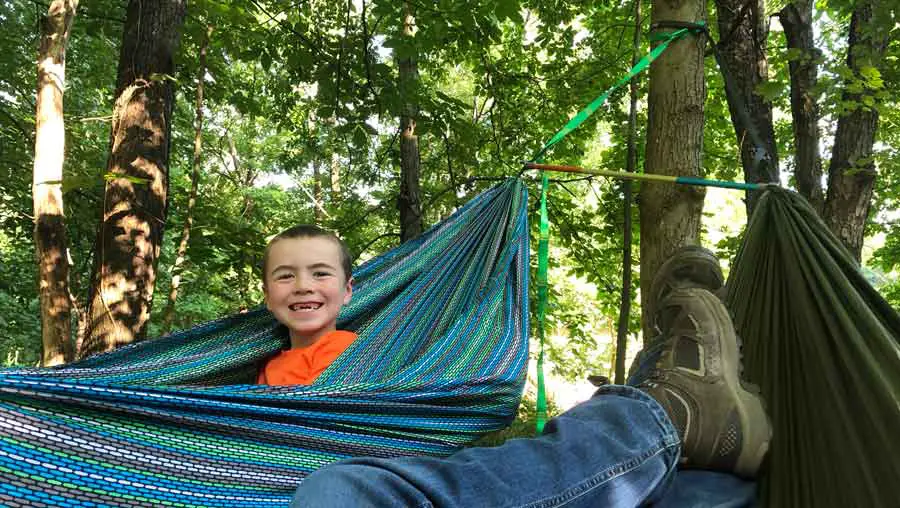
Tent: Tent camping with youngsters is a fairly common practice. Camping as a family is tons of fun. A tent provides that extra layer of security for people who like to keep their children close by having everyone sleep in the same space. A tent also allows for children to sleep in more of the familiar bed type situation that they are used to at home. Of course, no matter the camping method you choose there will always be safety concerns that you will need to be aware of and prepare for.
The Verdict: Hammock and Tent
17. Camping with a Dog
Keep in mind that it will take some training for your dog to be able to camp with you. There are also safety concerns that you should be prepared for as well such as the wildlife in the area you are camping in. I don’t recommend tethering your dog to a tree outside of your tent or tarp for safety reasons. Keep your dog close to you while camping and don’t leave him alone in the woods. You just need to be sure your pet is safe and happy.
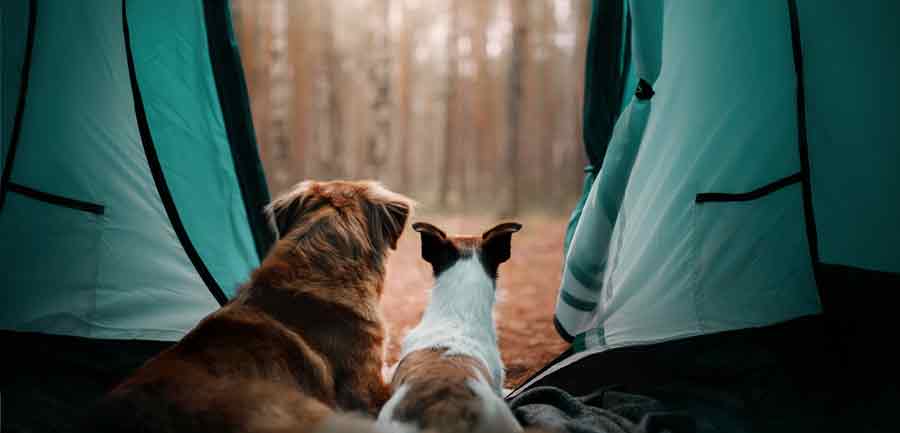
Hammock: It is possible to hammock camp with your dog. Small dogs can rest on your lap while you sleep – large dogs can also do this, but it will depend on your comfort level. You can also tether your dog beneath your hammock on a sleeping pad that is under your tarp so your furry friend also stays dry.
Tent: Tent camping is really easy with dogs. They will sleep inside your tent with you on a pad of their own.
The Verdict: Hammock and Tent
18. Afternoon Break
Hammock: Fast and easy to set up, hammocks are great for quick breaks. Whether you are just wanting to hang out in the backyard in the afternoon or need a break in the middle of your hike, as long as you have trees to hang from, a hammock fits the bill. Being able to take a break in the middle of a hike is the best thing about hammocks, in my opinion. Rather than pulling up a nice log or patch of dirt, you can just lay back and get off your feet for a bit. A hammock can be set up and packed away in a matter of a few minutes.
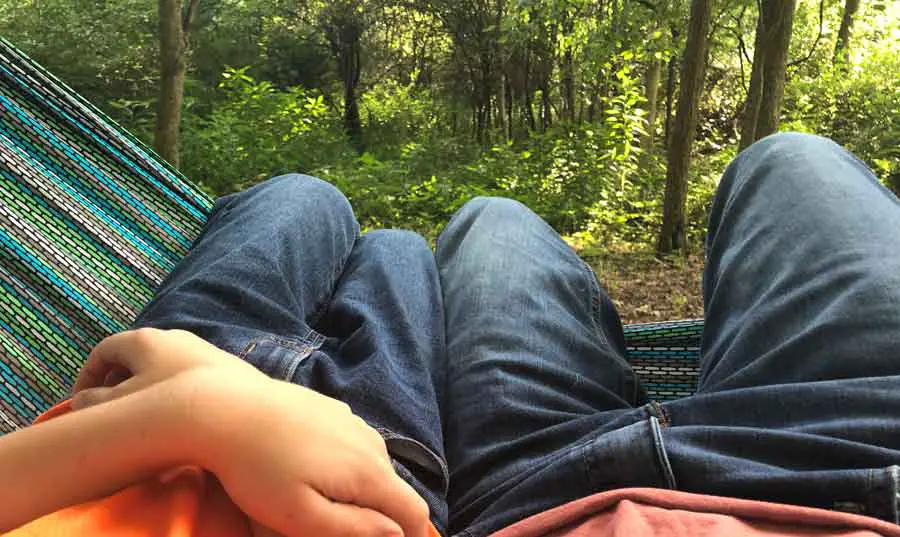
Tent: Tents are usually not easy to set up for quick breaks. If you are setting up your tent, you are probably planning to make that your campsite for the night. It’s just not worth the time and effort to set up and tear down for just a little time-out during the day.
The Verdict: Hammock
19. Least Safety Concerns
Hammock: If you properly prepare and check your gear and equipment before your trip, you will cut down on a lot of the safety risks. Equipment failure and improper use by people are the most common dangers while hammock camping. Of course, wildlife, fire, and other factors are also safety concerns no matter if you are in a hammock or tent. Using tattered or worn straps or using the wrong suspension for your hammock is just asking for trouble. Falls happen when people are trying to get in and out of their hammocks. Don’t hang your hammock higher than you are willing to fall.
Tent: The general safety concerns while camping always apply regardless of whether we are in a hammock or a tent. Be aware of your environment and set up in a safe area. Tents don’t come with as many inherent safety concerns as hammocks do. Trips and falls do happen when entering and exiting the door of the tent. Paying attention and common sense will keep you safe.
The Verdict: Tent
20. Learning Curve
Hammock: There’s a bit of a science to getting the ideal hammock setup. You need to learn how to choose the right trees to hang from, how to get the right amount of sag in your hammock, setting your straps at the right height to accommodate for slope – which changes in each situation, adaptations for inclement weather, setting up tarps and ridgelines, knowing basic knots, and several other variables. There is definitely a lot to learn when it comes to hammock camping, but with time and practice you will get it down.
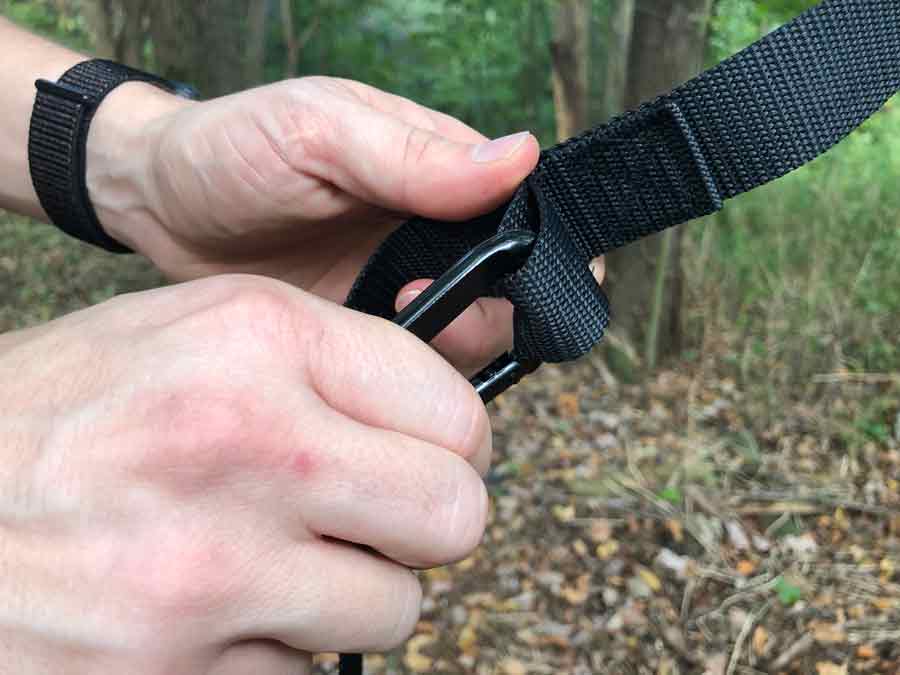
Tent: There is typically only one way to set up a tent and once you do it a few times you can have it mastered. There are some tents that are designed to do multiple configurations and those take a bit more practice. Each tent will also vary in style and manufacturing. Some tents have their little quirks and some set up much easier than others. Larger tents made for multiple people will likely require more than one person helping to set it up.
The Verdict: Hammock and Tent
21. Least Amount of Gear:
Hammock: If you have any concern about the number of items for your camping set up, then hammocks probably aren’t for you. All the gear and equipment for hammock camping is a separate item – with the occasional exception of all-inclusive setups (which aren’t really truly all-inclusive in a lot of cases) You will need the basics at minimum: hammock, tarp, straps, bug net, stakes, string/paracord, sleeping pad or underquilt (if cold). That is just 7 things you need to have to hammock camp. If you have more than one person, lets say a family of 4, then it’s possible to have up to 28 items. I know when my family goes camping we each have a backpack and everyone is responsible for your own gear. That makes it so you pack in only what you need. It can be a lot to keep track of. It is for this reason that I use a checklist to make sure that I have everything I need when I leave on my trip and when I pack to come back home.
Tent: Tents are really quite simplified when it comes to gear. Everything is typically fully contained in its own storage bag. Even though tents do have a few separate pieces, they are all contained in the bag making it easy to carry and keep track of. Your tent bag usually includes: tent, tent footprint, stakes, tension rods, and tent tarp. The tent bag can be cumbersome to carry as they can be quite bulky and heavy. There are lightweight tents that are for backpacking as well.
The Verdict: Tent
22. Replacing Broken Items:
Hammock: Since most of your hammock gear is separate from all the others, it’s much easier to replace when something wears out or breaks. Hammock gear is also able to be mixed and matched so you can start with a budget-friendly option until you need to upgrade and can invest a little more to do so. You aren’t locked into any one brand or style with hammock gear allowing you to have many many options when it comes to replacement.

Tent: If something goes wrong and breaks on your tent, it’s not as easy to get a replacement. You can order replacement parts from some tent manufacturers. You will just have to decide if it’s worth it to buy the replacement parts or if you should buy a new tent. There’s not as much flexibility with tents as there is with hammocks.
The Verdict: Hammocks
Grand Verdict:
Hammocks 19 and Tents 13
So what’s your decision?
If you are considering making the switch from a tent to hammock camping, I hope this list of factors has been helpful and informative. It will ultimately depend on your preferences and situation.
No matter your decision, I hope that you are always out enjoying The Wanderful Wild.
Hammocks (19) vs. Tents (13)
